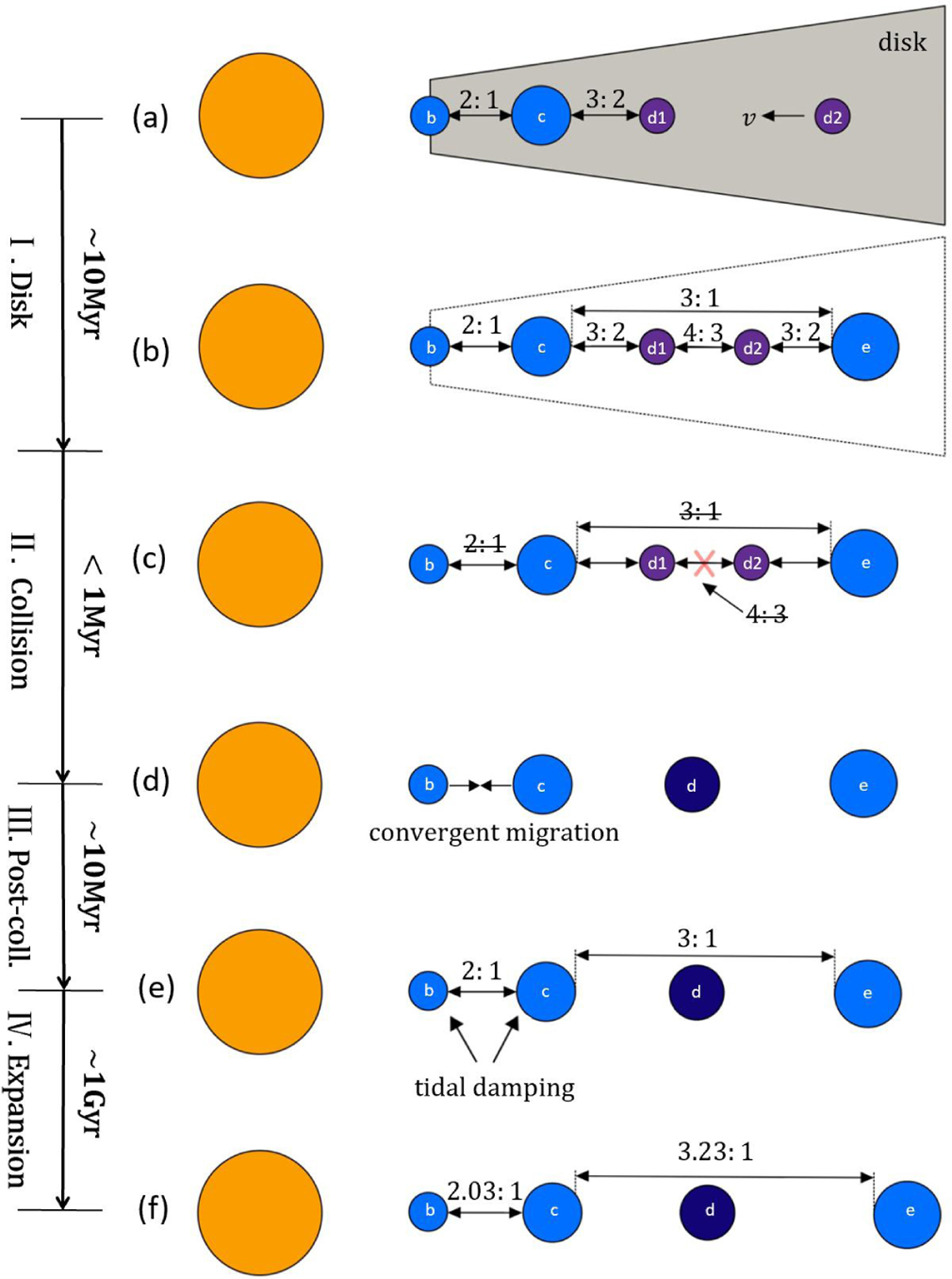Fig. 1

Download original image
Schematic of the formation model for the Kepler-221 planet system investigated in this study. Sequential migration traps five planets in a chain of first-order resonances (panels a+b). After disk dispersal, the resonance chain breaks (panel c) triggering a dynamical instability that results in the merger of planets d1 and d2 (panel d). Convergent migration between planets b and c re-establishes the b, c, and e resonance chain (panel e). On evolutionary timescales (∼1 Gyr) the b, c, and e resonance chain expands to the present-day period ratios due to tidal dissipation (panel f).
Current usage metrics show cumulative count of Article Views (full-text article views including HTML views, PDF and ePub downloads, according to the available data) and Abstracts Views on Vision4Press platform.
Data correspond to usage on the plateform after 2015. The current usage metrics is available 48-96 hours after online publication and is updated daily on week days.
Initial download of the metrics may take a while.


